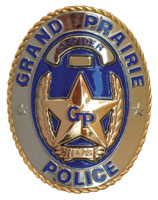| Jurisdiction | Video Verified | Traditional Alarm | Response Differential |
| Boston, MA | 7:38 | 21:00 | 13:22 |
| Charlotte, NC | 5:10 | 13:30 | 8:20 |
| Chula Vista, CA | 5:05 | 19:18 | 14:13 |
| Watertown, MA | 4:00 | 23:00 | 19:00 |
| Fairfax County, VA | 6:00 | 18:02 | 12:02 |
| Salinas, CA | 2:54 | 39:25 | 36:29 |
| Amarillo, TX | 10:06 | 19:24 | 9:18 |
| Barrie, ON | 8:02 | 16:02 | 8:00 |
 When the industry standard for video verification was created in 2004, self-surveillance on smartphones was not even on the radar. Apple’s first iPhone did not even hit the market until 2007. The early video verification process required the central station operator to manually access a camera/DVR when an alarm triggered and download the video for review. This often required working with static IP addresses, firewalls and video management systems that were isolated from the central station automation software that ran the business. All of this required specialized operators who were trained to manage video and operate multiple video systems remotely. Technology changed all this. Video verification is now done by the typical operator in the central station. Central station automation like MAStermind, Bold, Dice, MicroKey, SIMS, and others have integrated video verification into their standard alarm processes. In addition, there are third party solutions like I-View Now that enable any central station to do video verification without changing their automation software. These central station solutions work with a wide variety of hardware, from IP cameras to specialized camera/sensors devices designed specifically for video verification. Just as smartphones and mobile apps changed the lives of consumers, the central station solutions for video verification have made monitoring video alarms simple and inexpensive for the typical alarm dealer. Market Penetration Self-surveillance and home automation have created a paradigm shift in the alarm business affecting even the most basic alarm offering. Declining video hardware and monitoring costs mean that video verification now fits the competitive business model of $99 down and a multi-year contract that finances the hardware/installation. Commercial applications have been the first to embrace video verification. The newest generations of hardware and monitoring services have finally reached the pricing level necessary to move into the competitive residential market. Partners
When the industry standard for video verification was created in 2004, self-surveillance on smartphones was not even on the radar. Apple’s first iPhone did not even hit the market until 2007. The early video verification process required the central station operator to manually access a camera/DVR when an alarm triggered and download the video for review. This often required working with static IP addresses, firewalls and video management systems that were isolated from the central station automation software that ran the business. All of this required specialized operators who were trained to manage video and operate multiple video systems remotely. Technology changed all this. Video verification is now done by the typical operator in the central station. Central station automation like MAStermind, Bold, Dice, MicroKey, SIMS, and others have integrated video verification into their standard alarm processes. In addition, there are third party solutions like I-View Now that enable any central station to do video verification without changing their automation software. These central station solutions work with a wide variety of hardware, from IP cameras to specialized camera/sensors devices designed specifically for video verification. Just as smartphones and mobile apps changed the lives of consumers, the central station solutions for video verification have made monitoring video alarms simple and inexpensive for the typical alarm dealer. Market Penetration Self-surveillance and home automation have created a paradigm shift in the alarm business affecting even the most basic alarm offering. Declining video hardware and monitoring costs mean that video verification now fits the competitive business model of $99 down and a multi-year contract that finances the hardware/installation. Commercial applications have been the first to embrace video verification. The newest generations of hardware and monitoring services have finally reached the pricing level necessary to move into the competitive residential market. Partners  The alarm business is built upon a partnership with insurance industry and law enforcement. The insurers encourage their policy holders to install alarm systems to reduce claims and prevent loss. The alarm industry depends upon law enforcement to respond to their alarms and protect their customers in the event of a burglary or intrusion. Video verification is already strengthening this partnership. The insurance industry has taken notice of priority response and what it means to them in terms of reduced losses. In January 2013, Pharmacists Mutual Insurance published the results of a five-year study that linked arrest rates and losses experienced to police response times. Other major insurance companies like Hanover, CNA, Allstate, and State Farm are working on updating policies to encourage their policy holders to move to video verification. While this is a slow process, the insurance industry has begun to turn the rudder, and the ship is in motion. In the past decade, video technology has fundamentally changed law enforcement with cameras in patrol cars and on highways and even portable cameras worn by officers. Law enforcement depends upon video, and video verified alarms are another step in this direction. While law enforcement understands video verification means fewer false alarms, they also know that video verified alarms mean more arrests. Officers have always been motivated to “catch the bad guys,” and video verification helps make this happen. As Chief Steve Dye of Grand Prairie, TX, explained to the IACP committee on Community Policing in a recent presentation, “From our perspective, we see no difference between an eyewitness calling to report a crime and a central station operator calling to report a crime they have seen on video. In fact, the fact that a video exists of the actual event could mean the central station call could even be considered stronger.” Chief Dye is promoting priority response to encourage his citizens to install video verified alarms to help him in the battle against property crime. It is making a difference. Currently, the response time for a video verified alarm in Grand Prairie, TX is less than two minutes.
The alarm business is built upon a partnership with insurance industry and law enforcement. The insurers encourage their policy holders to install alarm systems to reduce claims and prevent loss. The alarm industry depends upon law enforcement to respond to their alarms and protect their customers in the event of a burglary or intrusion. Video verification is already strengthening this partnership. The insurance industry has taken notice of priority response and what it means to them in terms of reduced losses. In January 2013, Pharmacists Mutual Insurance published the results of a five-year study that linked arrest rates and losses experienced to police response times. Other major insurance companies like Hanover, CNA, Allstate, and State Farm are working on updating policies to encourage their policy holders to move to video verification. While this is a slow process, the insurance industry has begun to turn the rudder, and the ship is in motion. In the past decade, video technology has fundamentally changed law enforcement with cameras in patrol cars and on highways and even portable cameras worn by officers. Law enforcement depends upon video, and video verified alarms are another step in this direction. While law enforcement understands video verification means fewer false alarms, they also know that video verified alarms mean more arrests. Officers have always been motivated to “catch the bad guys,” and video verification helps make this happen. As Chief Steve Dye of Grand Prairie, TX, explained to the IACP committee on Community Policing in a recent presentation, “From our perspective, we see no difference between an eyewitness calling to report a crime and a central station operator calling to report a crime they have seen on video. In fact, the fact that a video exists of the actual event could mean the central station call could even be considered stronger.” Chief Dye is promoting priority response to encourage his citizens to install video verified alarms to help him in the battle against property crime. It is making a difference. Currently, the response time for a video verified alarm in Grand Prairie, TX is less than two minutes.






